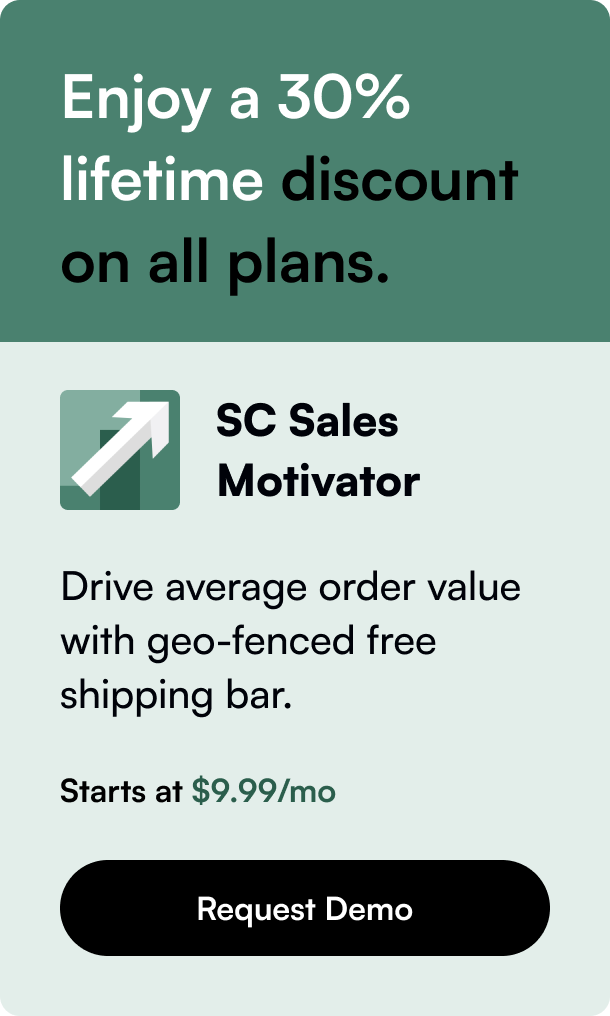Table of Contents
In the ever-evolving landscape of e-commerce, Shopify stands out as a robust platform that empowers business owners to create, manage, and scale their online stores with ease. As we move forward, increasing the Average Order Value (AOV) on your Shopify store has become more crucial than ever. A higher AOV not only boosts your revenue but also optimizes marketing spend, ensuring a healthier return on investment. Let’s unpack actionable strategies to elevate your AOV in 2024.
Introduction
Imagine this: Two stores generate the same number of transactions, but one has a significantly higher AOV. The result? Enhanced profitability and room for aggressive growth strategies. This blog post will delve into tried-and-tested methods that can help you increase the AOV of your Shopify store. From psychological triggers to leveraging technology, we will cover ground-breaking techniques that are both innovative and practical.
Why AOV Matters
Boosting your Shopify store's AOV means you are extracting more value from each customer transaction, a key metric for long-term success. An impressive AOV is indicative of effective upselling, cross-selling, and customer loyalty strategies—all crucial elements for sustainable business growth.
Comprehensive Strategies to Increase AOV on Shopify
Elevating your AOV involves a blend of psychological tactics, technological tools, and excellent customer service. Below, we explore strategies tailored to the 2024 e-commerce landscape.
1. Personalize the Shopping Experience
Personalization is not just about addressing your customer by their first name. It’s about curating a shopping experience that resonates with their preferences, past purchases, and browsing history. Utilize AI-powered tools to showcase relevant product recommendations, creating an irresistible urge to add more to their cart.
2. Implement a Tiered Rewards Program
Customers love the feeling of progressing towards a valuable reward. A tiered loyalty program encourages them to spend more to unlock exclusive benefits, discounts, or freebies. Each tier acts as a mini-goal, motivating increased spending to reach the next level.
3. Leverage Time-Sensitive Offers
Creating a sense of urgency is a timeless tactic. Flash sales, limited-time offers, and countdown timers can push customers to make quicker and larger purchases. Highlighting limited stock levels can also trigger the fear of missing out (FOMO), encouraging customers to increase their order value.
4. Master the Art of Upselling and Cross-selling
Upselling and cross-selling are potent tools in the e-commerce playbook. However, their success hinges on relevance and timing. Offer complementary products or premium versions at key moments in the customer journey, like at checkout or within the product page. Ensure these recommendations add genuine value to the customer's initial intent.
5. Simplify Bulk Purchases
Bulk purchasing incentives can significantly uplift your AOV. Offer discounts or free shipping on orders above a certain threshold. This not only increases the AOV but also reduces per-unit shipping and handling costs, benefiting both the customer and your bottom line.
6. Focus on High-Value Product Bundles
Curate product bundles that tap into the customer’s desire for convenience and savings. These bundles should feel like a steal—offering a combination of items that are better purchased together at a reduced total cost. Highlight how bundles solve problems or fulfill needs more effectively than standalone products.
7. Introduce a Subscription Model
Subscriptions ensure recurring revenue and increase AOV by locking in future transactions. Offer exclusive perks, like special discounts or early access to new products, to subscribers. This model works exceptionally well for consumables or items that require regular replenishment.
8. Optimize for Mobile Shopping
With an increasing number of transactions happening on mobile devices, optimizing your store for mobile users can positively impact your AOV. A seamless mobile shopping experience encourages spontaneous buys and larger order values.
9. Utilize Social Proof and Reviews
Social proof and reviews are powerful influencers of buying behavior. Featuring user-generated content, like photos and testimonials, alongside product recommendations can increase trust and encourage customers to add more to their carts.
10. Invest in High-Quality Product Visuals
Never underestimate the power of high-resolution images and videos in convincing customers to spend more. Detailed visuals allow customers to appreciate the value of your products, influencing higher order values.
Conclusion
Increasing your Shopify store’s AOV is a multifaceted endeavor requiring a blend of strategies spanning marketing, psychology, and technology. By personalizing the shopping experience, leveraging tactical promotions, and focusing on customer satisfaction, you can significantly enhance your AOV. Remember, the goal is not just to sell more, but to sell smarter, fostering a loyal customer base that sees value in every click.
FAQs
Q: How do I track AOV on Shopify?
A: Shopify provides an insightful analytics section where you can monitor your AOV among other crucial business metrics.
Q: Is offering free shipping for higher order values always a good strategy?
A: While free shipping is a strong incentive, it should be strategically implemented. Ensure it’s set at a threshold that increases your AOV without eroding profit margins.
Q: Can too many product recommendations overwhelm customers?
A: Yes, bombarding customers with too many choices can lead to decision paralysis. Curate recommendations wisely to enhance the shopping experience without overwhelming users.
Q: How often should I review and adjust my strategies for increasing AOV?
A: Regularly! E-commerce is dynamic, and customer preferences can shift rapidly. Continuously test and refine your strategies to keep them effective and aligned with current trends.
Elevating your AOV is instrumental in unlocking the full potential of your Shopify store. As you implement these strategies, keep a close eye on analytics to measure their impact, allowing for continuous optimization and growth in 2024 and beyond.








